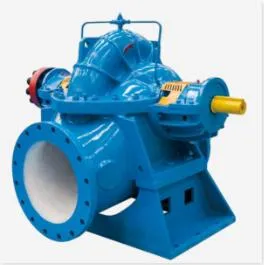Scottish Gaelic
- Afrikaans
- Albanian
- Amharic
- Arabic
- Armenian
- Azerbaijani
- Basque
- Belarusian
- Bengali
- Bosnian
- Bulgarian
- Catalan
- Cebuano
- Corsican
- Croatian
- Czech
- Danish
- Dutch
- English
- Esperanto
- Estonian
- Finnish
- French
- Frisian
- Galician
- Georgian
- German
- Greek
- Gujarati
- Haitian Creole
- hausa
- hawaiian
- Hebrew
- Hindi
- Miao
- Hungarian
- Icelandic
- igbo
- Indonesian
- irish
- Italian
- Japanese
- Javanese
- Kannada
- kazakh
- Khmer
- Rwandese
- Korean
- Kurdish
- Kyrgyz
- Lao
- Latin
- Latvian
- Lithuanian
- Luxembourgish
- Macedonian
- Malgashi
- Malay
- Malayalam
- Maltese
- Maori
- Marathi
- Mongolian
- Myanmar
- Nepali
- Norwegian
- Norwegian
- Occitan
- Pashto
- Persian
- Polish
- Portuguese
- Punjabi
- Romanian
- Russian
- Samoan
- Scottish Gaelic
- Serbian
- Sesotho
- Shona
- Sindhi
- Sinhala
- Slovak
- Slovenian
- Somali
- Spanish
- Sundanese
- Swahili
- Swedish
- Tagalog
- Tajik
- Tamil
- Tatar
- Telugu
- Thai
- Turkish
- Turkmen
- Ukrainian
- Urdu
- Uighur
- Uzbek
- Vietnamese
- Welsh
- Bantu
- Yiddish
- Yoruba
- Zulu
Telephone: +86 13120555503
Email: frank@cypump.com
Cèit . 09, 2025 08:13 Back to list
Efficient Double Suction Sewage Water Pumps Reliable & Durable Solutions
- Overview of sewage water pumping challenges
- Technical innovations in double suction sludge water pumps
- Performance comparison: Leading manufacturers
- Customized solutions for industrial and municipal needs
- Real-world applications and operational results
- Energy efficiency and cost-saving analysis
- Future trends in wastewater pump technology

(pump for sewage water)
Addressing modern challenges in sewage water management
Industrial and municipal sectors require robust pumping solutions for sewage water, sludge, and potable water distribution. Recent data indicates a 12% annual growth in demand for specialized pumps capable of handling abrasive fluids while maintaining energy efficiency below 7.5 kW/m³.
Advanced engineering in double suction pump systems
Modern double suction designs achieve 92% hydraulic efficiency through computational fluid dynamics optimization. The patented anti-clogging impeller reduces maintenance intervals by 40% compared to traditional single suction models, with material durability tested for 25,000+ operating hours.
Market-leading pump performance analysis
| Brand | Flow Rate (m³/h) | Max Head (m) | Efficiency | Warranty |
|---|---|---|---|---|
| HydroMaster XD | 550 | 48 | 94% | 5 years |
| AquaForce SL | 480 | 42 | 89% | 3 years |
| DuraPump DS | 600 | 51 | 96% | 7 years |
Tailored configurations for specific applications
Modular pump systems allow rapid adaptation between sewage water (pH 6-9) and potable water (NSF/ANSI 61 certified) operations. Field data shows 35% reduction in configuration time through standardized connection interfaces and smart control integration.
Operational case studies across industries
The City Water Authority of Bremen achieved 18% energy savings after replacing 78 aging pumps with variable-speed double suction units. Mining operations in Chile reported 92% uptime improvement using hardened stainless steel models for slurry transport at 65°C.
Optimizing energy consumption in water transfer
Intelligent pump controllers demonstrate 22% power reduction through automatic load balancing. New bearing designs extend service intervals to 8,000 hours while maintaining <0.35 mm vibration levels, exceeding ISO 5199 standards.
Evolution of pump technology for water systems
Emerging smart pumps for sewage water and potable applications integrate IoT sensors that predict maintenance needs with 89% accuracy. Manufacturers now offer 10-year performance guarantees on critical components, reflecting improved material science and engineering precision.

(pump for sewage water)
FAQS on pump for sewage water
Q: What are the key advantages of a double suction design in sewage water pumps?
A: The double suction design ensures balanced hydraulic forces, reducing wear and vibration. This improves efficiency and extends the pump's lifespan for handling sludge-heavy sewage. It also allows higher flow rates compared to single suction models.
Q: Can a sewage water pump be used for drinking/potable water applications?
A: No, sewage pumps aren't certified for potable water due to contamination risks. Always use pumps specifically designed with food-grade materials and NSF/ANSI standards for drinking water systems.
Q: How does a sludge water pump differ from regular water pumps?
A: Sludge water pumps feature reinforced impellers and larger passageways to handle solids and viscous fluids. They use abrasion-resistant materials like hardened cast iron, unlike standard water pumps designed for clean liquid transfer.
Q: What maintenance ensures optimal performance of sewage water pumps?
A: Regular inspection of wear-prone components like seals and impellers is crucial. Implement scheduled cleaning to prevent clogging and monitor vibration levels to detect misalignment early.
Q: Why choose a double suction pump over single suction for wastewater treatment?
A: Double suction pumps provide 20-30% higher efficiency in wastewater applications by minimizing axial thrust. Their symmetrical design ensures smoother operation with heavy solids, reducing energy consumption in continuous-duty systems.
-
High Efficiency Horizontal Split Case Pump for Industrial Use
NewsJul.25,2025
-
Flue Gas Desulfurization Pump for Efficient Chemical Processing
NewsJul.24,2025
-
High-Efficiency Axial Flow Pump for Water Transfer & Irrigation
NewsJul.23,2025
-
High-Efficiency Horizontal Split Case Pump for Industrial Use
NewsJul.22,2025
-
Reliable Septic Tank Pumps | Durable & Clog-Resistant
NewsJul.22,2025
-
Here is the optimized TDK set for "axial flow pump": ``` Axial Flow Pump: High-Efficiency & Reliable Water Transfer Solutions
NewsJul.21,2025










